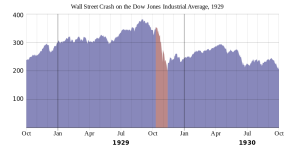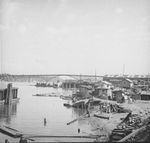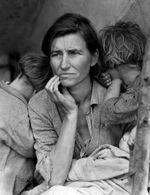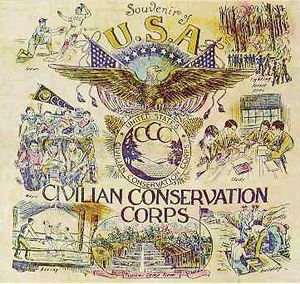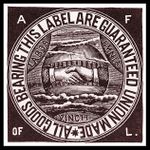The Great Depression and the New Deal: 1929 - 1940
| Faculté | Lettres |
|---|---|
| Département | Département d’histoire générale |
| Professeur(s) | Aline Helg[1][2][3][4][5][6][7] |
| Cours | The United States and Latin America: late 18th and 20th centuries |
Lectures
- The Americas on the eve of independence
- The independence of the United States
- The U.S. Constitution and Early 19th Century Society
- The Haitian Revolution and its Impact in the Americas
- The independence of Latin American nations
- Latin America around 1850: societies, economies, policies
- The Northern and Southern United States circa 1850: immigration and slavery
- The American Civil War and Reconstruction: 1861 - 1877
- The (re)United States: 1877 - 1900
- Regimes of Order and Progress in Latin America: 1875 - 1910
- The Mexican Revolution: 1910 - 1940
- American society in the 1920s
- The Great Depression and the New Deal: 1929 - 1940
- From Big Stick Policy to Good Neighbor Policy
- Coups d'état and Latin American populisms
- The United States and World War II
- Latin America during the Second World War
- US Post-War Society: Cold War and the Society of Plenty
- The Cold War in Latin America and the Cuban Revolution
- The Civil Rights Movement in the United States
The 1920s, known as the "Roaring Twenties," was a decade of prosperity and optimism in the United States, but it all came to an abrupt end in October 1929 with the stock market crash that triggered the Great Depression, the longest and most severe economic downturn in American history. The Great Depression had a profound impact on every aspect of American life, causing widespread unemployment, poverty, and financial instability. Millions of Americans lost their jobs, and many businesses and banks failed. The crisis also had a severe impact on agriculture, with many farmers losing their land. The Great Depression led to significant changes in the role of government in the economy, with the federal government taking on a more active role in managing the economy in order to stabilize it and promote growth. The New Deal policies of President Franklin D. Roosevelt helped to alleviate some of the worst effects of the Great Depression and laid the foundation for the country's economic recovery in the 1940s.[8]
y aspect of American life. It came as a shock to many Americans, who were used to a decade of prosperity in the 1920s. The Great Depression was also severe and long-lasting, lasting for more than a decade and leaving no sector of the economy or society untouched. Millions of Americans lost their jobs, homes, and savings, and many were forced to rely on government assistance to survive.
The Great Depression also had a profound impact on the psychology and outlook of an entire generation of Americans. It created a sense of uncertainty and insecurity, and many people lost faith in the economic system and the ability of the government to provide for their well-being. The crisis also had a lasting impact on American politics, leading to a shift in the balance of power between the government and the private sector, and setting the stage for a more active role for the government in the economy.
The Great Depression also had a significant social impact, leading to the rise of social movements, changes in cultural values and a change in the relationship between government and citizens. It also created a sense of hopelessness and despair among many Americans, and it left an indelible mark on the collective memory of the nation.
The Great Depression had a profound effect on the American political system, leading to a shift in power between the Republican and Democratic parties. Prior to the Great Depression, the Republican Party had been the dominant political force in the United States since the end of the Civil War. However, with the onset of the Great Depression in 1929, the political landscape shifted dramatically as the Democratic Party, which had traditionally been associated with the South and Irish Catholic immigrants, transformed itself into the party of the left, the party of the working and middle classes, who were suffering from the economic downturn. The New Deal policies of President Franklin D. Roosevelt and his administration were instrumental in this shift, as they were popular among many Americans and helped to establish the Democratic Party as the dominant political force in the United States and also led to the emergence of new political movements such as the Progressive Party, which sought to address the economic and social issues arising from the crisis.
Causes of the 1929 crash
the causes of the stock market crash of 1929 were complex and multifaceted. At the time, many Americans looked for the cause of the crash elsewhere and did not anticipate the severe and long-lasting nature of the economic downturn that followed. One common explanation was that the crash was caused by the economic instability in Europe, specifically the inability of European nations to pay the loans they had taken out with American banks after World War I.
While some historians and economists have pointed to European debt as a contributing factor to the stock market crash of 1929, more recent studies have suggested that the causes of the crash were primarily rooted in the United States itself. The second industrial revolution, which saw rapid technological advancements and increased industrial production, led to a period of economic growth and prosperity in the United States during the 1920s. However, this growth also contained the seeds of its own bankruptcy, as the economy was built on a foundation of speculation and debt.
There were also other factors that contributed to the crash. The stock market had been on a bull run for several years prior to the crash, with stocks prices rising to unrealistic levels. Many investors were buying stocks on margin, meaning they were borrowing money to purchase stocks and counting on the continued rise in stock prices to pay off their loans. This led to a speculative bubble in the stock market, which ultimately burst in October 1929.
Additionally, the rapid expansion of the automobile and household appliance industry in the United States during the 1920s contributed to the economic downturn that led to the stock market crash of 1929. As these industries grew, they gradually led to a saturation of the domestic market, as American companies were producing more cars and appliances than the American people could buy. This caused a decline in consumption, which in turn led to a decline in production. The excess supply of goods led to a decrease in demand and a decline in profits for companies in these industries. This, combined with the overvaluation of stocks in the stock market, led to a decline in business confidence, which was one of the factors that contributed to the crash.
There were also structural issues in the economy that contributed to the stock market crash of 1929. One of these was the increasing importance of consumer credit. As the economy boomed in the 1920s, consumer credit became more widely available, which allowed people to purchase goods and services they could not afford with cash. This led to an increase in consumer spending, which in turn helped to fuel the economic boom of the decade. However, when the economy began to decline, many people were unable to pay off their debts, which led to a decline in consumer spending and further exacerbated the economic downturn.
Another structural issue that contributed to the crash was the low interest rates that were in place at the time. Low interest rates made it easy for people to borrow money, which led to an increase in speculation and an overvaluation of stocks. When interest rates began to rise, many investors were unable to meet their financial obligations, which led to a decline in stock prices and the crash of the market.
Lastly, the lack of regulations on the stock market also contributed to the crash. There were few regulations in place to prevent insider trading or to protect investors from fraud, which led to a lack of transparency in the market. This made it difficult for investors to make informed decisions, and many ended up losing money as a result of the crash.
One of the key issues that contributed to the stock market crash of 1929 was the uneven distribution of wealth. The economic boom of the 1920s was not shared equally, with a large portion of the population not benefiting from the prosperity. Wages for working-class Americans were not keeping pace with the rising cost of living, and the concentration of wealth was becoming more pronounced. While production grew by 43% during the decade, wages for working-class Americans increased by only 11%. This led to a widening gap between the wealthy and the working class, which further eroded consumer confidence and contributed to the crash.
Furthermore, the uneven distribution of wealth also had a negative impact on the economy in the aftermath of the crash. As wealth continued to be too unevenly distributed, too much money went into profits, dividends, and industrial expansion, and too little went into the pockets of workers who are potential consumers. This led to a decline in consumer spending, which in turn led to a decline in production and a decline in employment. The lack of purchasing power among workers and the middle class led to a decrease in demand and further exacerbated the economic downturn.
The Great Depression brought to light the need for government intervention in the economy in order to redistribute wealth, provide jobs and social welfare to the population. This led to the New Deal policies of President Franklin D. Roosevelt. The New Deal programs sought to provide economic relief, recovery, and reform through various government-led initiatives, including public works projects, farm subsidies, and financial regulations.
- GDP depression.png
The overall course of the Depression in the United States, as reflected in per-capita GDP (average income per person) shown in constant year 2000 dollars, plus some of the key events of the period[9].
One of the ways to avoid the crisis would have been either to raise wages or to lower prices to sell more; in fact, the three Republican governments do not want to intervene and the big industrialists refuse to see that they are accumulating something that will explode.
On the other hand, there is a continuous regression of the rural world that began with the end of the First World War and which is worsening with the countryside producing too much and therefore with prices that are falling and expelling its own peasant population.
The Republican administrations do nothing, and the countryside is being depopulated to the benefit of the cities, which are swelling the number of workers.
The crash of late October 1929
The boom in sales in the 1920s was based on credit purchases, to stimulate credit the government even lowered interest rates, instead of investing in industry and equipment for the long term the money freed up went into stocks creating huge speculation with a rise in the value of shares and a kind of artificial boom that further concealed the malfunctioning of the economy.
Many middle-class Americans had started to invest in the stock market, which was all the more artificially inflated. In this stock market euphoria, many investors had made projects without any prior study that turned out to be bankruptcies.
From 22 to 29 October, the stock market curves plunged, millions of shares were put back on the market and no longer found buyers; the strongest shares lost up to 80% of their value, the entire banking system based on credit and confidence collapsed, creating bankruptcies and ruin. Hundreds of banks have to close their doors and credit companies can no longer recover their debts.[10][11][12]
Between 1929 and 1932 the gross national product of the United States fell by more than 40%, industrial production fell by half and agricultural production fell by half. At the same time, the number of unemployed increased almost tenfold, from 1.5 million to 12 million.
The families of the unemployed find themselves without any income, leading to more homelessness, famine, misery and rising disease; at the same time in rural areas they are rotting on the spot because agricultural prices have fallen so low that it is no longer even worth harvesting.
Of course, blacks are the first to lose their jobs, but often also Mexicans are deported in tens of thousands who enter the labour market in Mexico; however, the arrival of workers in Mexico is almost without a hitch.
The poor have to be even more resourceful, and it is the middle class that will be the most upset, because it is the middle class that has lived the most under the illusions of the 1920s; they are forming "Hooverville", people who have lost everything are going to build huts on the outskirts of cities to survive as best they can.[13][14]
Election of 1932
The Republicans are doing almost nothing about this catastrophe; Hoover continues to believe that the liberal system will be able to solve all this and that everything will be able to be arranged according to the goodwill of all, the competition and charity of the rich.
In 1932, which was an election year, it became clear that this crisis would not be solved by the Republican laissez-faire approach.
The Republicans decided to promote Hoover's re-election; the Democrats understood that Americans needed a new president with a new vision of a state that would step in to help them, and that's when Franklin Roosevelt emerged.
Roosevelt is the man of renewal, distant cousin of Theodore Roosevelt; Franklin Roosevelt was born in 1882 as the only child of a very wealthy New York family, he studied at Harvard at Columbia University and then went on to marry Eleanor Roosevelt who was very rich and cultured.
Franklin Roosevelt had always been attracted to politics. He joined the Democratic Party and was elected Senator of the State of New York.
When Wilson became president of the United States and was appointed undersecretary of the Navy, he had not yet made his political turn, since he played a major role in the occupation of Haiti. He was then nominated by the Democratic Convention for the vice presidency in 1920 for the presidential nomination.
It is a first failure since the Republicans win the elections, but especially in 1921 Roosevelt is struck by poliomyelitis by coming out paralyzed in both legs. He decides not to give up politics. It must be seen that Roosevelt, from this struggle, will learn in particular to be more patient as well as suffering.
He decided to return to politics as a more progressive democrat, in 1928 he became governor of the State of New York at the time of the crash.
He appealed to the optimists to launch aid programmes that also created a commission for the unemployed and spoke out in favour of retirement pensions and laws in favour of workers' unions.
He made this experience the platform for his nomination as a candidate for the Democratic presidential election of 1932. The Democratic Convention chose him as a candidate.
At the nomination for the presidential election he promised a "New Deal for the American people"[15][16] that is to say, a redistribution of the cards and publicly announces its intention to set up programmes similar to those in place in New York State.
One of Roosevelt's characteristics and his ability to convince others, many historians have drawn a parallel with Cardenas; his voice is deep and warm, carried not only in meetings but also on the radio; he also has contagious confidence and assurance.
The 1932 election had a high turnout, with Roosevelt winning over Hoover in a majority of states. The Democrats also won the majority of seats in the Senate and the House of Representatives, which allowed him to implement his program.
Roosevelt was able to unite the Democratic Party across the previously dominant north-south divide. Roosevelt's election ushered in the Democratic dominance of American politics until 1952 with the election of Eisenhower.
To prepare for his election, Roosevelt surrounded himself with lawyers and academics in a "presidential election Brain Trust". The aim is to restore farmers' purchasing power and the middle classes, basically to boost consumption.
The idea is to create an economy of scarcity, the idea is that if we produce less, if the supply is reduced the price of goods will rise, it will boost the economy and everything will start again. The producers in this perspective will make more profits, the workers will earn better wages and the machine will restart on other bases.
Achievements : 1933 - 1935
Roosevelt called for immediate assistance programs for the unemployed and greater federal government intervention in the country's economy. In a speech, he said, "The only thing to be afraid of is fear itself, before anything else that every American must regain and confidence in himself and in the American nation[17] ". Ten days later, he launched the New Deal, his program to save the US economy.
It is not a question of changing the American economic and social system, nor is it, as in Mexico, a question of building state capitalism, but basically of restoring capitalism and launching reforms that do not affect private property.
First of all, it is a question of attacking the banks, closing all the banks in the country and reopening only those that are strong enough by subsidizing them.
It will also attack industry by creating the National Recovery Administration (NRA) to limit the production of industries in order to raise prices, allow workers to negotiate minimum wages and maximum working hours. The NRA failed and was abolished in 1935.
As part of agriculture Roosevelt created the Agriculture Adjustent Administration, which is also there to curb overproduction; what the government is doing is encouraging farmers to give up some of their land by giving them subsidies for land they will not farm. AAA is successful in reducing production and raising prices, but only benefits the large farmers who own their land and still have enough money to buy the machinery and fertilizers needed to produce on less land more profitably; on the other hand, this policy further ruins small farmers, smallholders and sharecroppers. This decision accelerates the transformation of U.S. agriculture into an agribusiness in the hands of the most efficient.
The other major programme is the Tennessee Valley Authority (TVA), which is designed for Tennessee, which has been particularly hard hit by the crisis, and it is a vast state-funded programme of building dams and power plants to kick-start economic development.
The Civilian Conservation Corps (CCC) program is a more original program aimed at sending young people from poor urban families to build roads, buildings in national parks and recreation centers, as they receive allowances that allow them to contribute to their family's income.
Another program is the Works Progress Administration, which is an aid program primarily directed against unemployment, it will distribute emergency aid to the unemployed and the poor, a total of $500 million is distributed to the states to be redistributed to those most in need; one American in six receives aid to avoid starvation.
In 1935, the WPA was given a budget of $5 billion to provide federal salaries and work for the unemployed, including artists, writers, etc. The WPA's budget was increased to $5 billion in 1935.
It is interesting to see that this program was interested in reproducing in the United States what had been done in Mexico even before. Another program is a program to help photographers who go into the countryside and Hooverville's to photograph a whole section of the population, giving them an exceptional school of photography.
Intensification of reforms in 1935 - 1936
All these programmes do not reduce unemployment with 30% unemployment. It is going to take a long time to reduce unemployment because these programs in the years 1933 - 1935 benefited above all the well-organized social partners, i.e. the large corporations, the large farmers and the unionized workers, but affected very little the most deprived.
Discontent is growing through politicians who are leaving the Democratic Party, often protesting against the inequalities of American society.
Roosevelt wanted to run for re-election in 1936, so this pushed him to radicalize his program with new reforms without questioning capitalism and land ownership.
This is when Social Security was created, the most spectacular piece of the New Deal, since until then the United States had no program to help the poor, the three-part Social Security:
- pension program funded by employers and employees.
- Unemployment assistance program.
- federal assistance program for state programs for the blind, disabled, elderly and children in need.
This Social Security is not without problems, the aid given is very small, those who would need it the most, i.e. small farmers, sharecroppers, domestic servants are excluded because they do not really have a contract with their employer which does not allow them to enter the system and the trade unions.
In 1935, another major step in state intervention in US industry took place when Congress banned "in-house" unions promoting industry-wide collective bargaining between unions and employers under the National Labor Act.
Roosevelt's second presidency: 1936 - 1940
Roosevelt with his wife campaigns; Roosevelt is triumphantly elected over his Republican opponent who accuses him of betraying the founding fathers and preparing socialism in the United States.
This is really the great turning point in the bipartisan system of the United States, it's the "great turning point in the bipartisan system of the United States New Deal Coalition" i.e., the coalition of all those who hope to benefit or have benefited from the New Deal: traditional white Southern Democrats, large industrial cities, workers of all races, immigrants, union members and also impoverished farmers; all will vote for Roosevelt who wins the election in all states except Maine and Vermont.[18]
He was still elected in 1940 and 1944; following that, the Republicans in 1951 passed a constitutional law prohibiting more than two presidential terms.
During his second presidency Roosevelt still has a Democratic-dominated congress and will continue his state aid program by founding the Farm Security Administration to help small farmers with loans, but he puts very little money into this program and only 2% of small farmers benefit; in the South, 200 tenant farmers, white and black, have become homeless.[19][20][21]
Ce programme va aider les petits paysans, mais aussi va servir à promouvoir et à donner du travail dans les grandes plantations.
In 1928 the Fair Labor Standard Act set minimum wages and limits on working hours. It is a law that was originally intended to protect non-unionized workers, but again it will benefit unionized workers, but will only affect workers in large, important industries.
Social assessment of the New Deal
The New Deal allows a rise in workers' trade unionism and its alignment with the Democratic Party, which really becomes the party of the working class.
In 1929 there was only one union in the United States, the conservative American Federation of Labor, which took only skilled workers and often excluded blacks.
In 1935, the foundation of the Committee on Industrial Organization (CIO) increased trade unionism; in 1929 there were 3 million union members, in 1939 there were almost 10 million, but unionized workers made up only 28% of all workers.
The New Deal's social programs also helped men more than women; among the unemployed, fewer women received federal assistance than men. Among the unemployed, 37 per cent are women, but only 19 per cent of those receiving assistance are women.
Yet thanks in part to Eleanor Roosevelt, women became more active in politics and mobilized much more, even though they have only been able to vote since 1920. Frances Perkins was the first woman secretary of the Department of Labor.
However, the New Deal did not do much for racial minorities. Even though Roosevelt had African-Americans in his entourage, he did not really take an anti-racist stance unlike his wife.
Since many blacks are domestic servants, janitors, or workers excluded from unions, they benefit only marginally from workers' programs; in the South, the restructuring of agriculture with the AAA is driving many tenant farmers and peasants off their land.
Mexicans and Americans of Mexican origin suffer greatly from the Great Depression, since half of them, or more than a million, have to return to Mexico willingly or by force.
In 1934 it was the Indian Reorganization Act[22][23] which stops the dismemberment of Indian communal lands and recognizes land ownership and tribal self-government.
The final balance sheet of the New Deal is a mixed one, it has reduced unemployment, but has not brought it out of unemployment; we see that in 1939 there are still 9 million unemployed, or 18 per cent of the labour force in the United States.
However, it has launched a whole series of national and federal programmes that will change the political and social life of the United States and it is completely reforming the political life of the United States.
From the economic and unemployment standpoint, it must be recognized that it will be the Second World War that will lead the United States out of the crisis.
Annexes
- 1929-1939 : Une décennie de misère (La Grande Dépression au Canada)
- Textes sur la Grande crise des années 1930 Cliotexte.
- Souvenirs et réflexions sur l'âge de l'inflation de Jacques Rueff, économiste et ancien fonctionnaire du Trésor Français.
- Le Crach de 1929 et la grande Dépression - Comment éviter une répétition de la débâcle Keynésienne
- 1932 popular vote by counties
- How close was the 1932 election? — Michael Sheppard, Massachusetts Institute of Technology
- Foreign Affairs,. (2015). The Great Depression. Retrieved 29 October 2015, from https://www.foreignaffairs.com/articles/united-states/1932-07-01/great-depression
References
- ↑ Aline Helg - UNIGE
- ↑ Aline Helg - Academia.edu
- ↑ Aline Helg - Wikipedia
- ↑ Aline Helg - Afrocubaweb.com
- ↑ Aline Helg - Researchgate.net
- ↑ Aline Helg - Cairn.info
- ↑ Aline Helg - Google Scholar
- ↑ When Did the Great Depression Receive Its Name? (And Who Named It?), 2-16-09, by Noah Mendel, History News Network though Hoover is widely credited with popularizing the term,
- ↑ Per-capita GDP data from MeasuringWorth: What Was the U.S. GDP Then?
- ↑ Klingaman, William K. (1989). 1929: The Year of the Great Crash. New York: Harper & Row. ISBN 0-06-016081-0.
- ↑ Harold Bierman, Jr. (April 1998). The Causes of the 1929 Stock Market Crash: A Speculative Orgy or a New Era?. Greenwood Publishing Group. pp. 19–29. ISBN 978-0-313-30629-7.
- ↑ "Market crash of 1929: Some facts of the economic downturn". Economic Times. Times Inernet. October 22, 2017. Retrieved February 16, 2019.
- ↑ "Hoovervilles and Homelessness". washington.edu.
- ↑ Carswell, Andrew T. (2012). "Hooverville". The Encyclopedia of Housing (Second ed.). SAGE. p. 302. ISBN 9781412989572.
- ↑ Roosevelt's official speech was "I pledge you, I pledge myself, to a new deal for the American people". (Source : http://www.u-s-history.com
- ↑ "The Roosevelt Week", Time, New York, July 11, 1932
- ↑ first inauguration of Franklin D. Roosevelt as the 32nd President of the United States was held on Saturday, March 4, 1933
- ↑ James Ciment, Encyclopedia of the Great Depression and the New Deal (2001) Vol. 1 p. 6
- ↑ "Farm Security Administration/Office of War Information Black-and-White Negatives: About this Collection". Library of Congress. 1935
- ↑ Charles Kenneth Roberts, Farm Security Administration and Rural Rehabilitation in the South. Knoxville, TN: University of Tennessee Press, 2015
- ↑ James Ciment, Encyclopedia of the Great Depression and the New Deal (2001) Vol. 1 p. 6
- ↑ Indian Reorganization Act - Information & Video - Chickasaw.TV
- ↑ Texte de l’Indian Reorganization Act et de ses amendements


